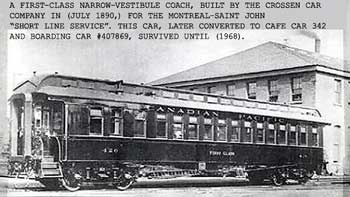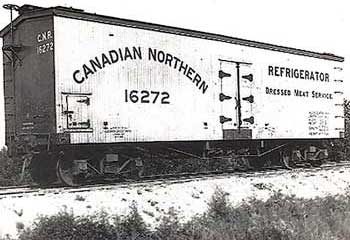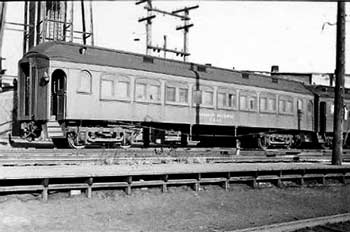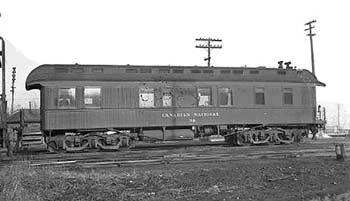
The Crossen Car Company
By Ted Rafuse
In the mid 1860's the moribund Cobourg & Peterborough Railway was undergoing a resurgence led by a number of Cobourg citizens. By this time the iron ore deposits at Mamora served as the impetus for the railway revival. To that end the railway company required ore cars and James Crossen agreed to construct several dozen of these. All were delivered in early 1867 and unknowingly Crossen initiated what was to become Canada's largest independent manufacturer of wooden railway passenger and freight cars.
With the creation and construction of the Canadian Pacific Railway, rolling stock demand increased dramatically and Crossen became a primary supplier of equipment to that Company.
With James Crossen's death in 1890, the enterprise was reorganized as the Crossen Car Manufacturing Company of Cobourg under the ownership and direction of William Crossen, the founder's son.
In the early 1890s the CPR began constructing its own rolling stock to the detriment of the Crossen Company.
With the return to economic stability in the late 1890s the construction of new Canadian railways commenced and of course these required rolling stock. Notably amongst the new customers were the Canadian Northern Railway and the Temiskaming and Northern Ontario Railway. The CNoR became a significant purchaser of Crossen equipment and was the only customer for the final years of the Crossen Company.
With the advent of steel in rolling stock construction William Crossen became aware that the new technology was a challenge to his company. He either had to invest heavily to compete in the new manufacturing process, or cease operations. He chose the latter and in mid 1915 the final wooden cars left the plant in Cobourg. The company ceased operations and the property itself was sold several years later.
The only Crossen structure that survives on site is the original office building. All the other buildings were constructed by later companies. On the west side of George Street, on either side of Park Street, sit the houses of James and William Crossen, as reminders of what was once the largest employer in Cobourg.
Ted Rafuse is a retired history teacher and former vice-principal. As a history teacher he became interested in developing a local history program in the mid 1970s and that led to an interest in local railway history. He has contributed articles to several railway periodicals including Canadian Railway Modeller, Steamboat Bill, and CNLines of which he is a volunteer editor.
He recently wrote and published Coal to Canada: A History of the Ontario Car Ferry Company which chronicles the history of that Company's railway car ferry operation between Cobourg and Rochester between 1907 and 1950. In July 2003 he was a member of the Maple Leaf 2003 Convention and Train Show held in Toronto. Ted was the Train Show coordinator for this international modelling gathering which had more than 2,000 participants. When not writing or researching Ted squires his 4 year-old grandson to the Port Hope or Cobourg stations to watch trains hoping to instil in the future generation the knowledge of railroading's significance to the development of the area and the country.



